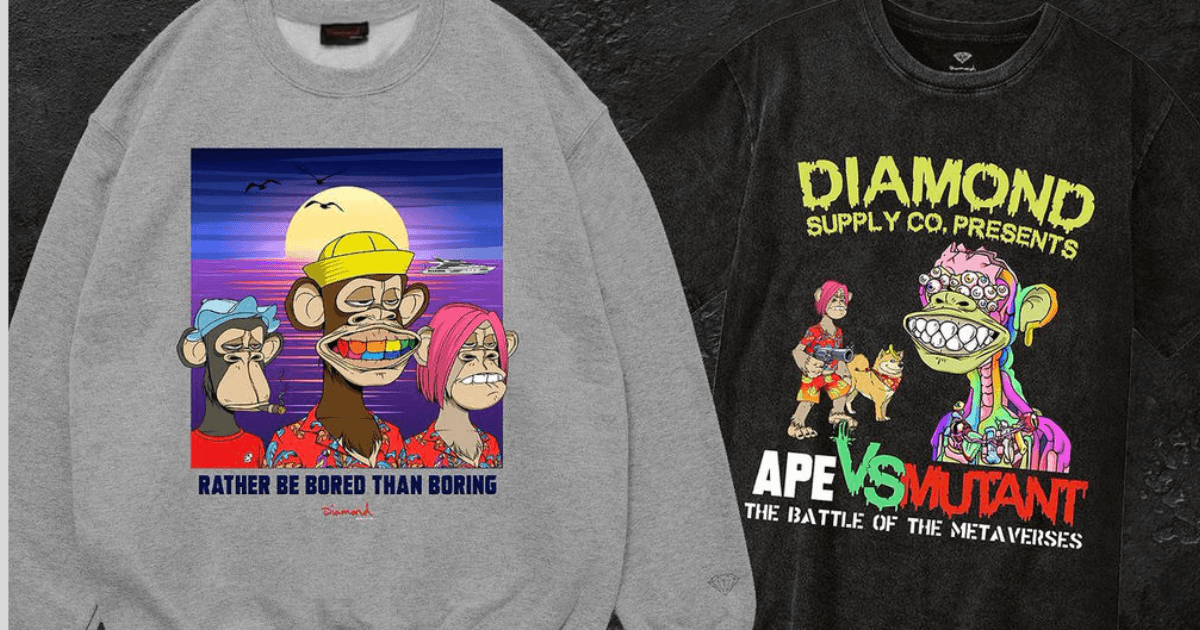NFT Collectives Find Power in Numbers

While buying NFTs has generally been a singular transaction, owners are now finding power in numbers.
Many NFT owners have banded together to form collectives that give broader representation to a brand with different images, personalities, and graphics that can be licensed.
For example, Bored of Directors, which is a group of 10 Bored Ape Yacht Club owners and represented for licensing by Brand Central, isn’t affiliated with the brand or its creator Yuga Labs. But since buyers of Bored Ape NFTs keep the rights to their purchase, they are free to create derivatives that can be stretched across product categories. In the case of Bored of Directors, each owner has one image from which derivatives can be made.
In the case of World of Women (WoW), which was formed last July by Yam Karkai as a collection of 10,000 unique “1-of-1” NFTs that now has 5,400 owners, it signed with music industry veteran Guy Oseary earlier this year to license the designs for television, film, music, and consumer products. The move is designed to make the ownership model a “difference maker” in decentralizing IP, Karkai said.
Diamond Supply Co. worked with Bored Ape owners to launch a 20-piece collection (including apparel ranging from $38 for a t-shirt to $110 for a zip-up hoodie) that’s being sold through Zumiez. And students at the Rhode Island School of Design formed their own M3dium Collective.
“When you buy an NFT, in many cases you own everything related to it so you can make or license related merchandise, promotions, restaurants, and other products or services,” said a licensing executive. “If you get a group of owners together, you can get into a range of categories and even license product for local markets. The collectives are moving quickly because licensees and retailers are interested since these groups have done all the heavy lifting in terms of style guides, and all they have to do is design products.”
The collectives are essentially represented to licensees and retailers as a single entity, but share in the sales. In the case of WoW, owners can receive 50% royalties, according to the group. WoW uses part of its earnings to fund global, women-focused projects like Too Young to Wed, a non-profit organization that is seeking to end child marriage. The top WoW NFT is Woman #9248, which sold for the equivalent of $587,269, while the lowest sale was $22.47 for Woman #3556.
And there’s Proof Collective, a group of 1,000 NFT owners and artists that recently produced the “Grails: Choose Wisely” collection that was created from the work of 20 artists. The Grails collection was unveiled solely to Proof members and included the works of Tyler Hobbs, Claire Silver, and others.
Amid the clamor for NFTs, however, has come a decline in their value, which while not unexpected, represents a reversal of fortune for a business that rose from relative obscurity last year to command $69 million for one token. The number of transactions declined 46.9% in the first quarter to 7.4 million, while the number of buyers (1.1 million) and sellers (816,027) declined 30% and 15.6%, respectively. The first quarter also marked the first time some NFT segments showed a negative balance, including gaming which posted a total loss of $50 million.
“The great novelty of the first quarter was undoubtedly the evolution of profitability in the markets,” the research firm Nonfungible said. “Making a profit in NFTs is no longer so easy in 2022.”




